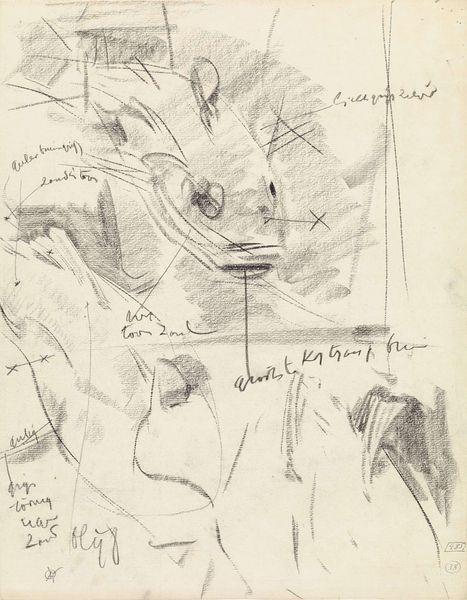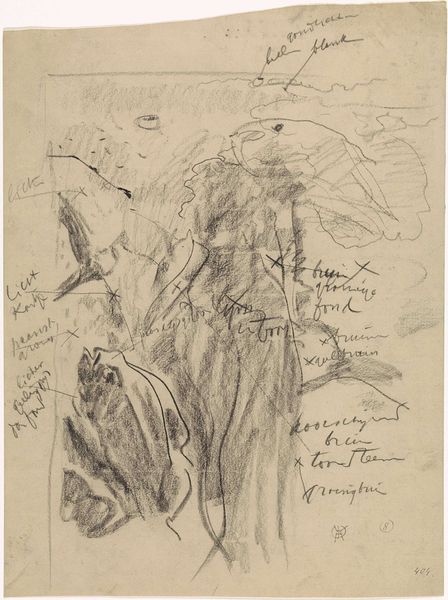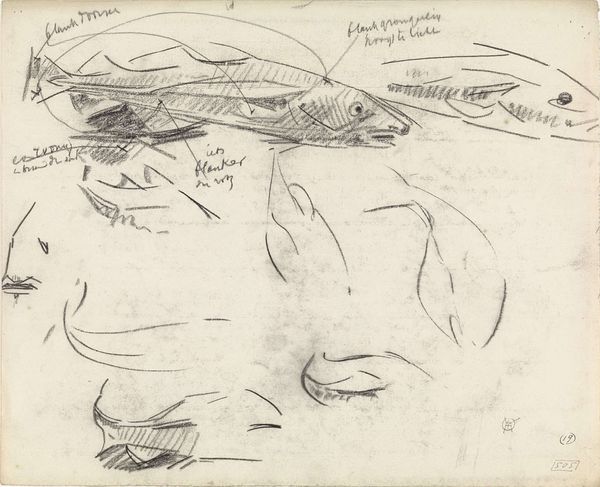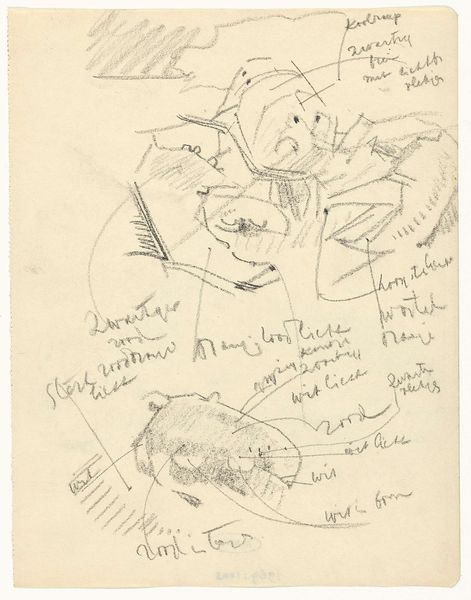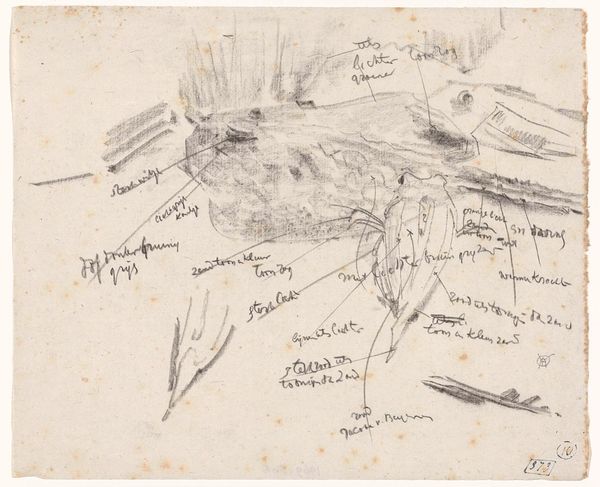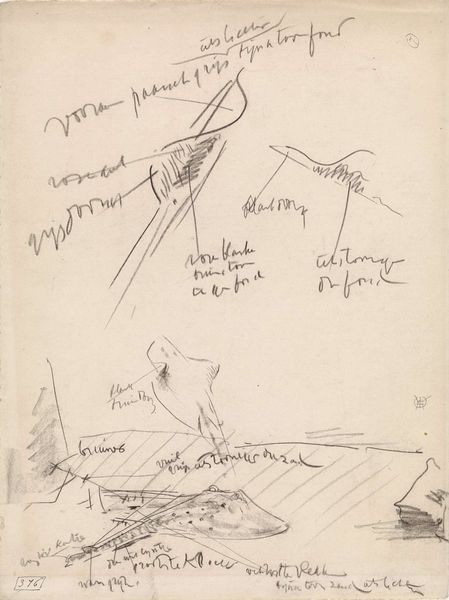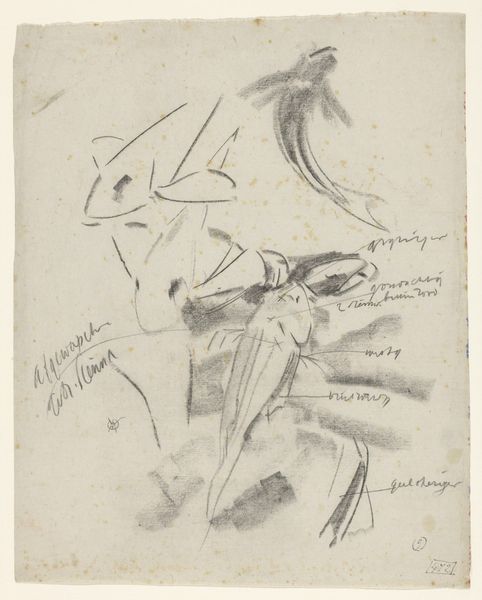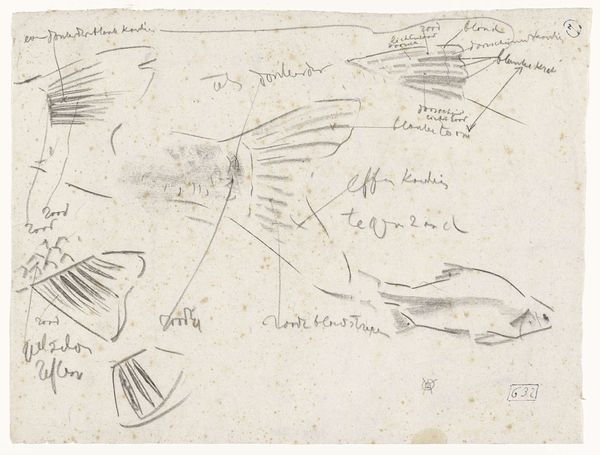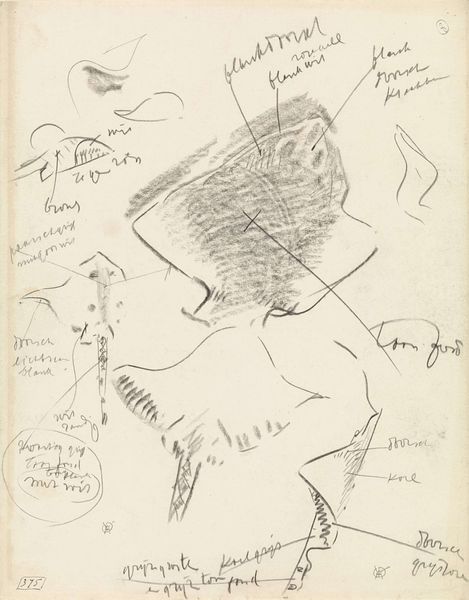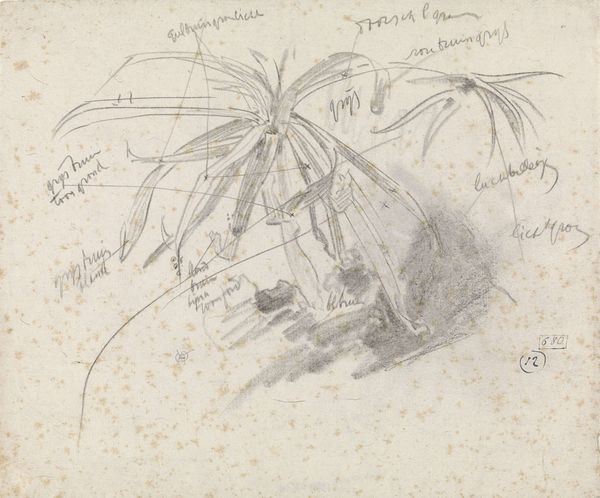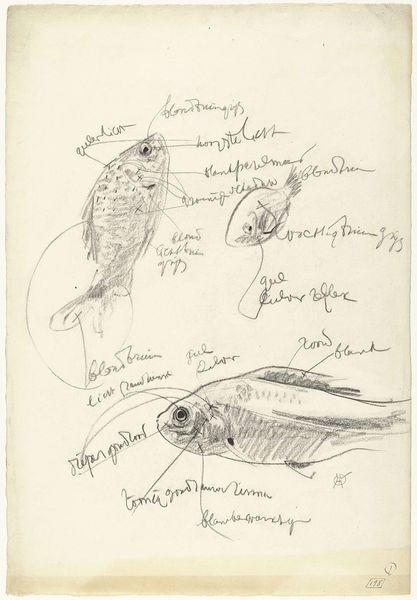
drawing, pencil, graphite
#
portrait
#
drawing
#
quirky sketch
#
sketch book
#
personal sketchbook
#
idea generation sketch
#
sketchwork
#
sketch
#
pen-ink sketch
#
pencil
#
graphite
#
sketchbook drawing
#
storyboard and sketchbook work
#
sketchbook art
#
realism
#
initial sketch
Dimensions: height 343 mm, width 280 mm
Copyright: Rijks Museum: Open Domain
Curator: Welcome. We're standing before Gerrit Willem Dijsselhof's "Poon op de rug gezien en studies van een oog," dating roughly between 1876 and 1924. It’s currently housed in the Rijksmuseum. Editor: What strikes me immediately is its sketch-like quality, almost like peering into the artist's private notebook. The delicate graphite lines create such a soft, ephemeral mood, yet the detailed rendering of the fish gives it this grounded sense. It's as if you are party to his idea-generating. Curator: Indeed. The sketch demonstrates a clear interest in rendering three-dimensional form through subtle tonal variations. Observe how the artist utilizes cross-hatching to define the curvature of the fish’s body. Moreover, the study of the eye shows a commitment to realistic representation, with careful attention to the interplay of light and shadow. Semiotically, we can consider how these visual elements function as signs, communicating ideas about form, light, and, ultimately, the artist's process of observation. Editor: I'm charmed by the inclusion of notes, scrawled right next to the drawing. I wonder if those were jotted down in the midst of the observation to help refine it, maybe thoughts about colour or texture. They lend this spontaneous energy to what could have been just another nature study. And they point to that connection that Dijsselhof had with the subject, an empathy or desire to fully capture this 'fishness', perhaps? Curator: The annotations offer an intimate glimpse into the artist's thought processes. By laying bare these musings, Dijsselhof creates a work that transcends simple depiction. We might view them through structuralism, identifying their arrangement on the page and what they communicate as the essence of how visual ideas come to fruition and meaning being constructed. Editor: Looking at the totality of this piece, it reveals an artist deeply engaged with their subject, not just portraying but, in a way, internalizing and understanding its structure. It feels less like a detached observation and more like an act of communion between artist and nature. Curator: An intriguing way to look at it, as it allows the artwork's communicative features to come to the fore. The fish takes on a more transcendent quality—beyond just observable characteristics—to embody ideas central to his craft. Editor: Precisely. It leaves one contemplating the artistic process itself—its mysteries, its discoveries. A really wonderful thing to consider further. Curator: A valuable point on which to reflect, especially in consideration of Dijsselhof’s meticulous approach and semiotic exploration of nature’s intricate components.
Comments
No comments
Be the first to comment and join the conversation on the ultimate creative platform.

